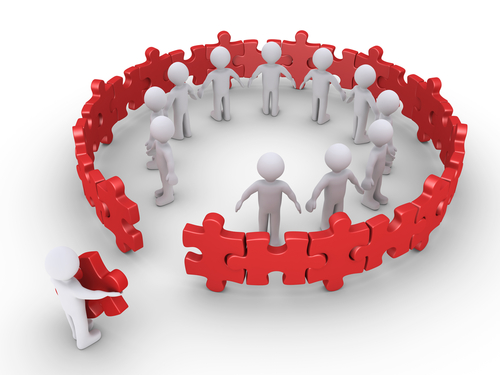 According to a 2009 Citizen Corps national survey, it found that 29 percent of Americans have not prepared because they think that emergency responders will help them, and that over 60 percent expect to rely on emergency responders in the first 72 hours following a disaster.
According to a 2009 Citizen Corps national survey, it found that 29 percent of Americans have not prepared because they think that emergency responders will help them, and that over 60 percent expect to rely on emergency responders in the first 72 hours following a disaster.
The nonchalance of a community is part of the normalcy bias that seems to affect many different communities. They believe, if there is no danger to hear or see, then there is no danger to prepare for. For that matter, why prepare at all since the government will come in and save the day? It is only when the disaster is imminent do they see the need to be ready. This thought process is what causes panic-induced preparedness and what leads to gaps in our preps, as well as causes panic runs on grocery stores and banks.
The Reality of the Situation
The reality of the situation is that in a disaster, there is a widespread systemic failure that most people do not realize or care to admit. For instance, from a local government standpoint, first responders and emergency workers may not be able to reach everyone right away due to downed power lines or debris blocking roadways and access points. Additionally, distribution trucks supplying food, water, fuel and other pertinent resources may have an inability to reach the community due to blocked roadways. Further, energy providers may not be able to restore critical services, such as power, immediately leaving much of the population vulnerable and ill-equipped to transition into living in an off grid environment. Moreover, when a large scale disaster occurs, multiple disaster organizations must join forces to help meet the needs of the populace. There can be confusion during this time and an overall lack of coordination and communication between federal, state, local, and non-governmental organizations. Put simply, this causes a temporary lapse in response and can cause chaos for the community.
Although federal, local government and emergency agencies are a part of our community and a part of the general disaster response, they are an imperfect piece to the puzzle and their shortfalls in the past have led many citizens to lose faith in their handling of critical issues. Once the realization hits that resources are scarce and the government is incapable of helping them in a timely fashion, desperate citizens tend to take action (Hurricane Katrina and the breakdown that ensued should come to mind). This threat of a community breakdown is what many preppers fear the most.
The Missing Piece to the Puzzle
But these failures can easily be avoided if the community adopts a like-minded approach to preparedness. The missing piece of the preparedness puzzle is a community that encourages individual readiness in every home. Rather than waiting on someone or an organization to rescue them, they rescue themselves. Prior to 1917, federal governments rarely intervened in disaster relief. Citizens did not expect the federal government to contribute to relief efforts, and most people thought of disaster relief as a responsibility for neighbors, faith-based organizations, and other charitable organizations. This also coincides with a time when this country was at its most self-reliant.
The simplest way to prevent post-disaster breakdowns in a community is to adopt a solid understanding that each member takes personal responsibility and prepare their own households. When writing The Prepper’s Blueprint, I mentioned “There is nothing more important to me than seeing that communities of people are prepared for what may come. But in order for an entire community to be prepared, it takes one person at a time to keep the preparedness fire lit.”
With this in mind, if the general public were to individually prepare, as well as have a basic set of survival skills to fall upon, and solid knowledge of emergency protocols the town will take, the community would be stronger as a whole, would transition more fluidly, and be more apt to working together. This shift in priorities would make for a stronger, more adaptable community.
This Begins With You
Ensuring that your community is prepared begins in your home. Take steps to set up a family preparedness plan, learn new skill sets, create a preparedness supply to fall upon and help others in the community prepare. Once you have completed these necessary steps, only then should you branch out to ensure that your neighbors, churches and other charitable organizations are ready.
